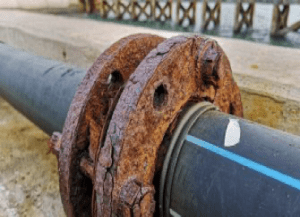
A Corrosion Risk Assessment Study (CRAS) is performed to determine the damage mechanisms and determine the probability, outcome, and overall risk. CRAS serves as a validation of material selection and proposed corrosion control criteria. The resulting risks are the basis for developing and updating online mitigation measures and monitoring programs.
Under the guidance of industry experts, including consultants and senior engineers, Cormat uses a comprehensive and structured approach in accordance with industry guidelines such as API 580, 581, API 571 and NACE standards such as NACE MR0175 / ISO15156 – to identify potential damage mechanisms, available in moving equipment and parts. By evaluating current operating conditions for failure probability and outcome, CORMAT provides its customers with unique insight into the condition of each asset.
Corrosion control techniques are useful tools for predicting and preventing corrosion damage. Corrosion prevention methods may differ depending on the type of corrosion that has occurred or may occur in the future. These different approaches are never based on a single factor; rather, it needs more resources to effectively implement appropriate corrosion prevention practices.
 Corrosion damage can be one of the main causes of Equipment/ device failure. Corrosion is one of the main challenges in large industries and is a constant concern for Plant productivity. Focusing on the oil and gas sector, corrosion in industrial areas leads to equipment failure, which greatly affects the safety of people and the surrounding environment.
Corrosion damage can be one of the main causes of Equipment/ device failure. Corrosion is one of the main challenges in large industries and is a constant concern for Plant productivity. Focusing on the oil and gas sector, corrosion in industrial areas leads to equipment failure, which greatly affects the safety of people and the surrounding environment.
We can all relate to prioritizing corrosion prediction and prevention to protect organizational assets and the effectiveness of prevention; certain control strategies must be modified accordingly. Therefore, the main purpose of corrosion prevention is to protect and preserve the integrity of the devices
Having years of experience in serving in the Oil and Gas Sector and with Certified and Experience Engineers CORMAT has the capability to apply its in depth knowledge to undertake any project as It is very important to use the best strategies to prevent corrosion and prevent damage.
Good strategies not only reduce or eliminate damage to goods but also reduce damage control costs. In addition, cost-effective solutions support business growth and overall security. To implement effective solutions, effective corrosion control strategies are utilized which ensure a safe and healthy environment to work in.
Please get in touch with our specialist.
Copyright 2023 Cormat Group | All Rights Reserved | Certified : ISO 9001